Preface Or: What Are You Getting Yourself Into Here?
Navigating This Book
Takeaways
Conventions Used in This Book
Online Resources
Figures
Code Snippets
O’Reilly Safari
How to Contact Us
Acknowledgments
I. The Beam Model
1. Streaming 101
Terminology: What Is Streaming?
On the Greatly Exaggerated Limitations of Streaming
Event Time Versus Processing Time
Data Processing Patterns
Bounded Data
Unbounded Data: Batch
Unbounded Data: Streaming
Summary
2. The What, Where, When, and How of Data Processing
Roadmap
Batch Foundations: What and Where
What: Transformations
Where: Windowing
Going Streaming: When and How
When: The Wonderful Thing About Triggers Is Triggers Are Wonderful Things!
When: Watermarks
When: Early/On-Time/Late Triggers FTW!
When: Allowed Lateness (i.e., Garbage Collection)
How: Accumulation
Summary
3. Watermarks
Definition
Source Watermark Creation
Perfect Watermark Creation
Heuristic Watermark Creation
Watermark Propagation
Understanding Watermark Propagation
Watermark Propagation and Output Timestamps
The Tricky Case of Overlapping Windows
Percentile Watermarks
Processing-Time Watermarks
Case Studies
Case Study: Watermarks in Google Cloud Dataflow
Case Study: Watermarks in Apache Flink
Case Study: Source Watermarks for Google Cloud Pub/Sub
Summary
4. Advanced Windowing
When/Where: Processing-Time Windows
Event-Time Windowing
Processing-Time Windowing via Triggers
Processing-Time Windowing via Ingress Time
Where: Session Windows
Where: Custom Windowing
Variations on Fixed Windows
Variations on Session Windows
One Size Does Not Fit All
Summary
5. Exactly-Once and Side Effects
Why Exactly Once Matters
Accuracy Versus Completeness
Side Effects
Problem Definition
Ensuring Exactly Once in Shuffle
Addressing Determinism
Performance
Graph Optimization
Bloom Filters
Garbage Collection
Exactly Once in Sources
Exactly Once in Sinks
Use Cases
Example Source: Cloud Pub/Sub
Example Sink: Files
Example Sink: Google BigQuery
Other Systems
Apache Spark Streaming
Apache Flink
Summary
II. Streams and Tables
6. Streams and Tables
Stream-and-Table Basics Or: a Special Theory of Stream and Table Relativity
Toward a General Theory of Stream and Table Relativity
Batch Processing Versus Streams and Tables
A Streams and Tables Analysis of MapReduce
Reconciling with Batch Processing
What, Where, When, and How in a Streams and Tables World
What: Transformations
Where: Windowing
When: Triggers
How: Accumulation
A Holistic View of Streams and Tables in the Beam Model
A General Theory of Stream and Table Relativity
Summary
7. The Practicalities of Persistent State
Motivation
The Inevitability of Failure
Correctness and Efficiency
Implicit State
Raw Grouping
Incremental Combining
Generalized State
Case Study: Conversion Attribution
Conversion Attribution with Apache Beam
Summary
8. Streaming SQL
What Is Streaming SQL?
Relational Algebra
Time-Varying Relations
Streams and Tables
Looking Backward: Stream and Table Biases
The Beam Model: A Stream-Biased Approach
The SQL Model: A Table-Biased Approach
Looking Forward: Toward Robust Streaming SQL
Stream and Table Selection
Temporal Operators
Summary
9. Streaming Joins
All Your Joins Are Belong to Streaming
Unwindowed Joins
FULL OUTER
LEFT OUTER
RIGHT OUTER
INNER
ANTI
SEMI
Windowed Joins
Fixed Windows
Temporal Validity
Summary
10. The Evolution of Large-Scale Data Processing
MapReduce
Hadoop
Flume
Storm
Spark
MillWheel
Kafka
Cloud Dataflow
Flink
Beam
Summary
Index

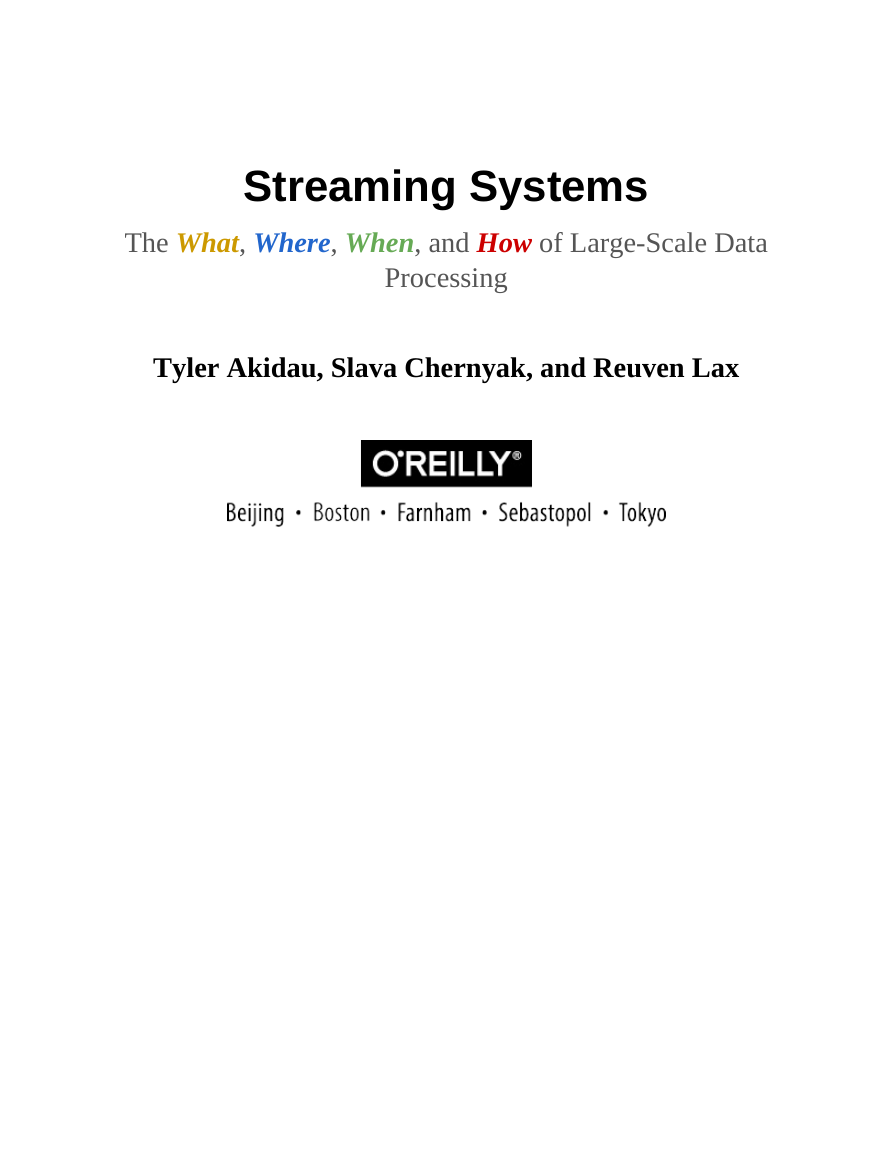
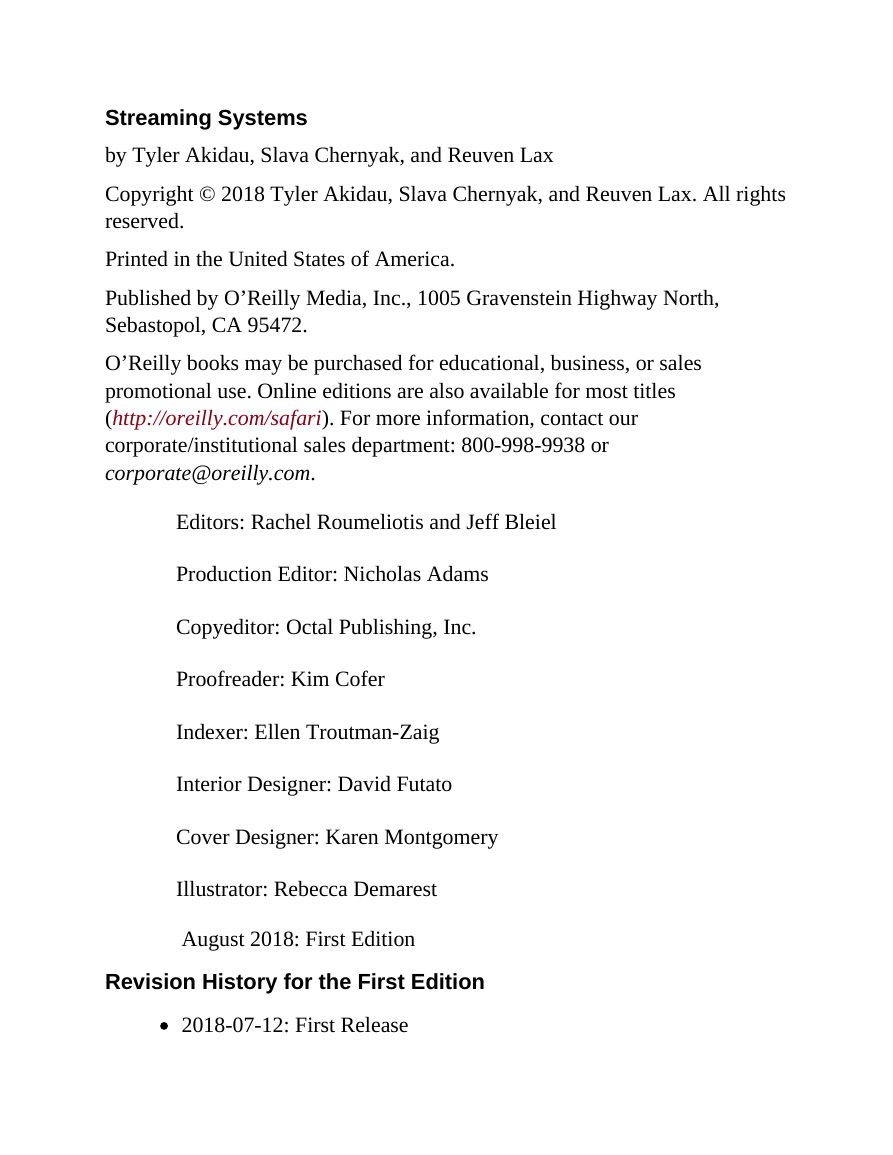
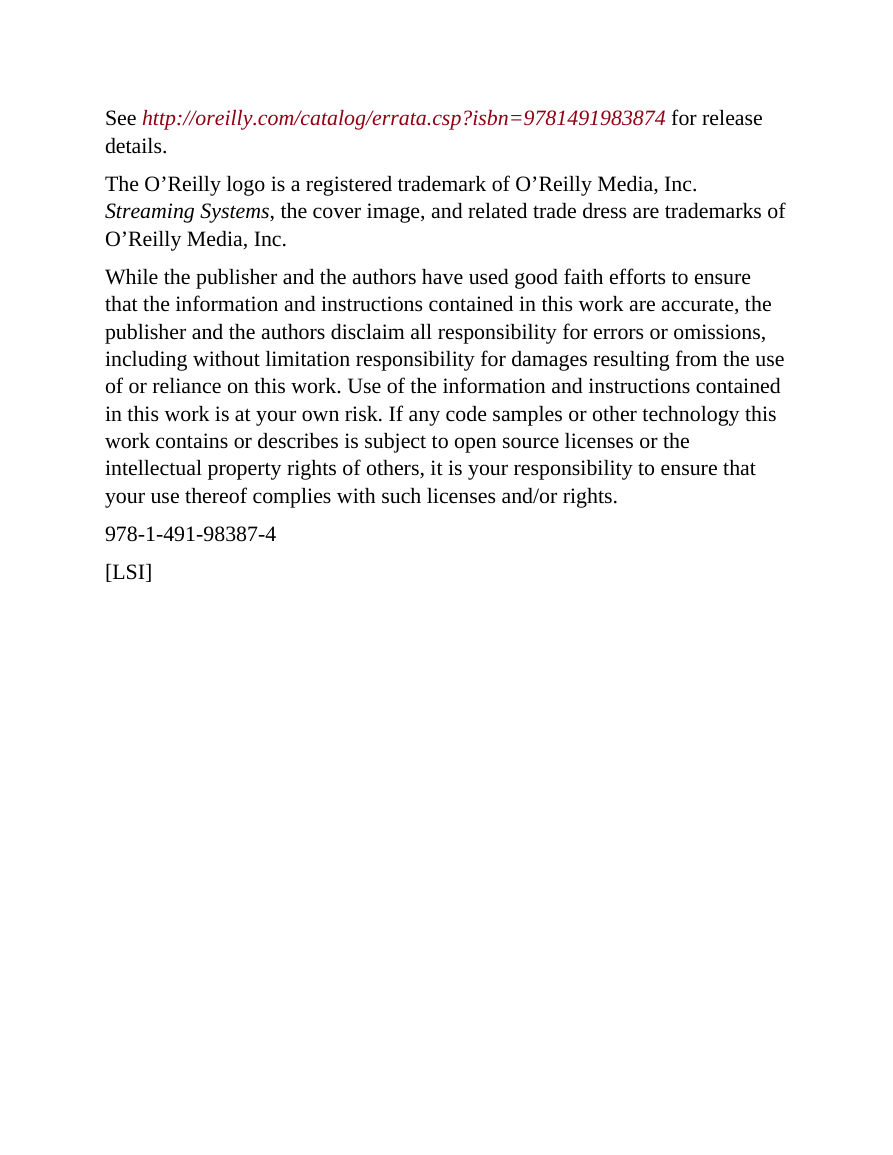
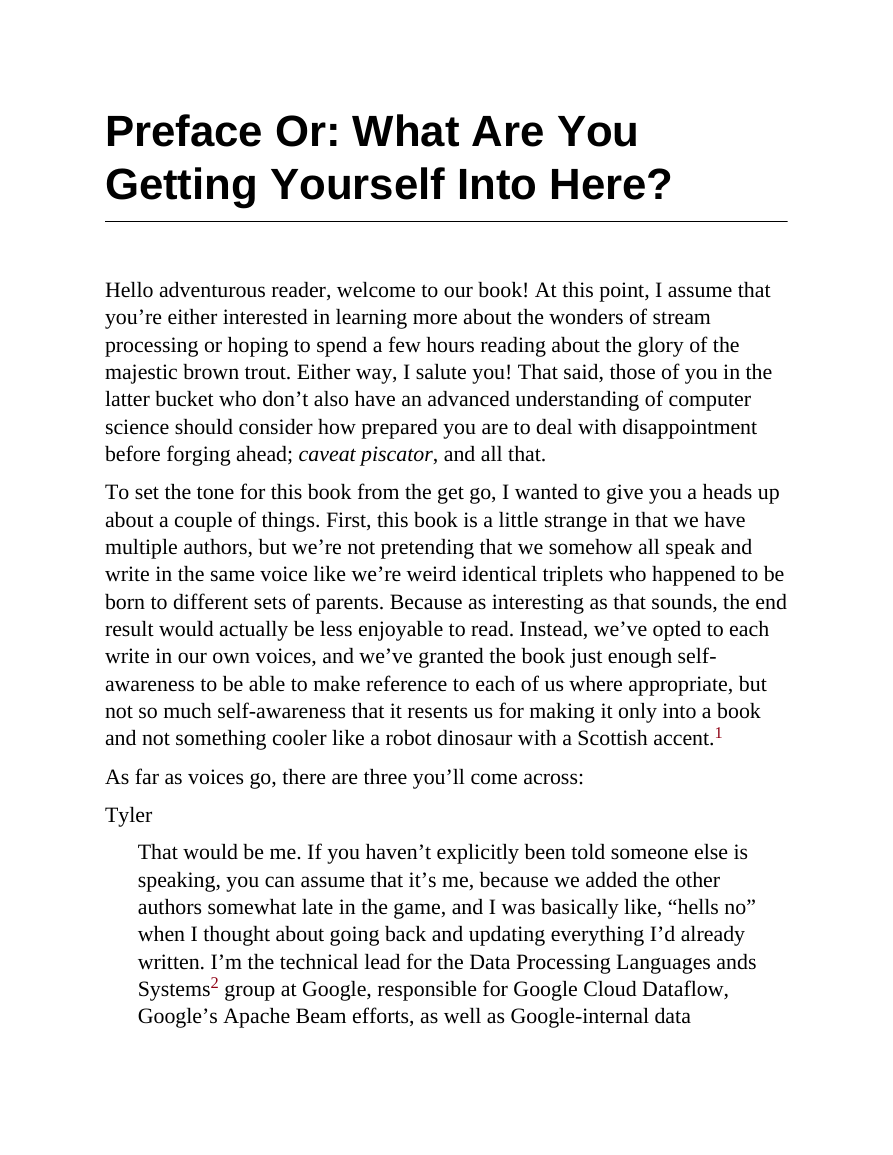
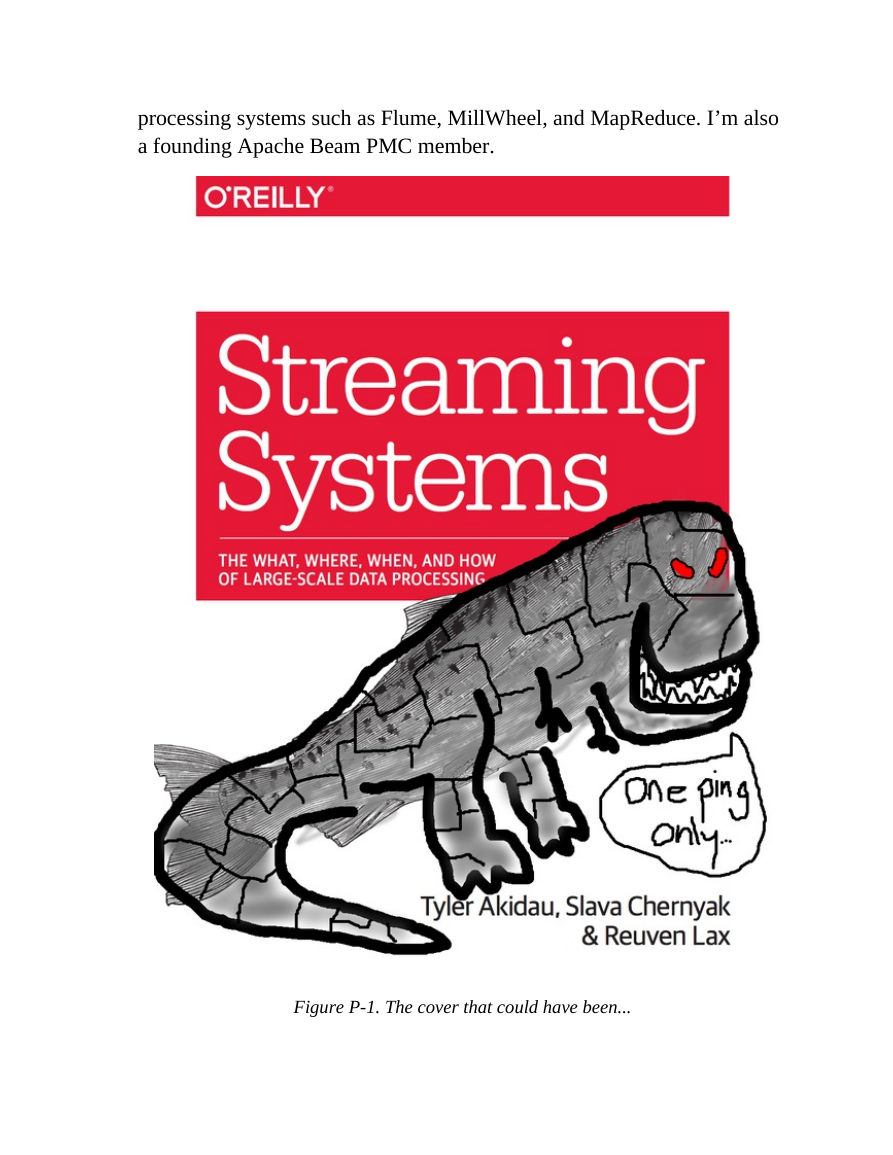
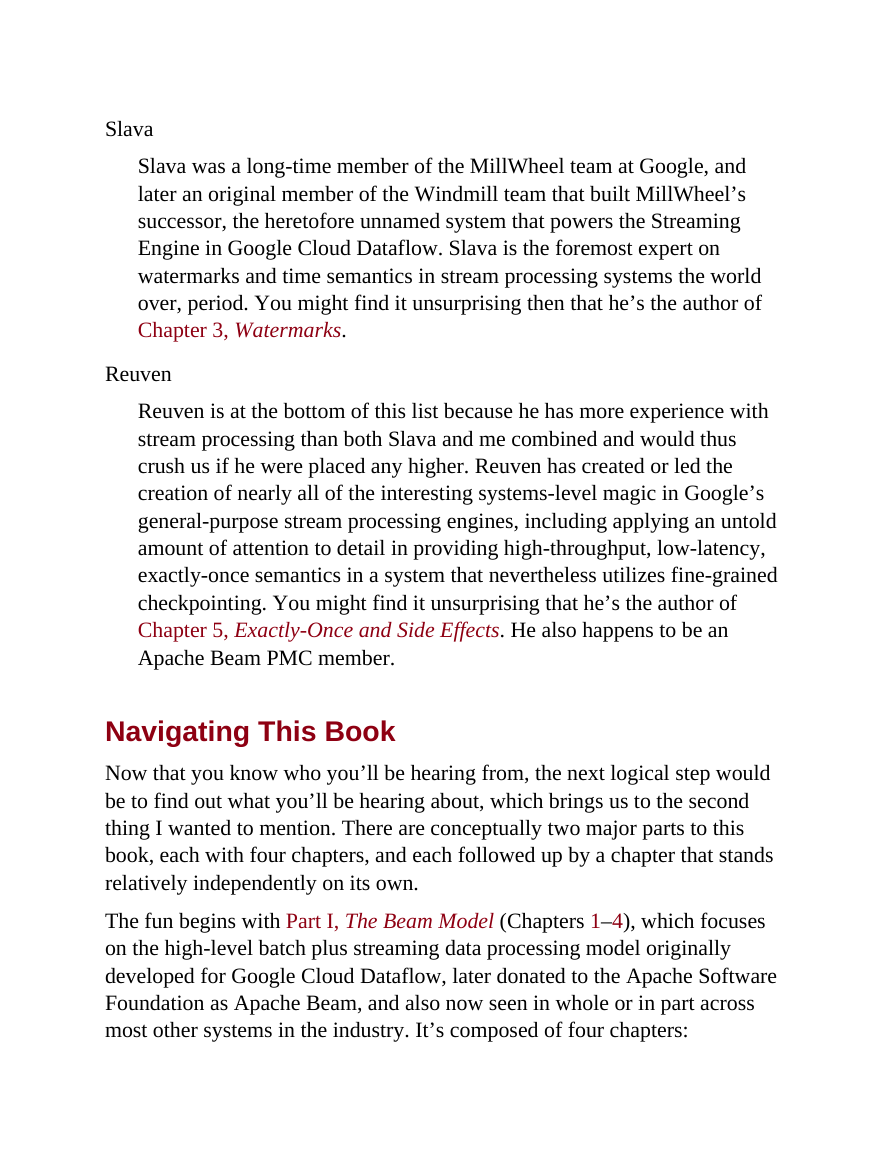









 2023年江西萍乡中考道德与法治真题及答案.doc
2023年江西萍乡中考道德与法治真题及答案.doc 2012年重庆南川中考生物真题及答案.doc
2012年重庆南川中考生物真题及答案.doc 2013年江西师范大学地理学综合及文艺理论基础考研真题.doc
2013年江西师范大学地理学综合及文艺理论基础考研真题.doc 2020年四川甘孜小升初语文真题及答案I卷.doc
2020年四川甘孜小升初语文真题及答案I卷.doc 2020年注册岩土工程师专业基础考试真题及答案.doc
2020年注册岩土工程师专业基础考试真题及答案.doc 2023-2024学年福建省厦门市九年级上学期数学月考试题及答案.doc
2023-2024学年福建省厦门市九年级上学期数学月考试题及答案.doc 2021-2022学年辽宁省沈阳市大东区九年级上学期语文期末试题及答案.doc
2021-2022学年辽宁省沈阳市大东区九年级上学期语文期末试题及答案.doc 2022-2023学年北京东城区初三第一学期物理期末试卷及答案.doc
2022-2023学年北京东城区初三第一学期物理期末试卷及答案.doc 2018上半年江西教师资格初中地理学科知识与教学能力真题及答案.doc
2018上半年江西教师资格初中地理学科知识与教学能力真题及答案.doc 2012年河北国家公务员申论考试真题及答案-省级.doc
2012年河北国家公务员申论考试真题及答案-省级.doc 2020-2021学年江苏省扬州市江都区邵樊片九年级上学期数学第一次质量检测试题及答案.doc
2020-2021学年江苏省扬州市江都区邵樊片九年级上学期数学第一次质量检测试题及答案.doc 2022下半年黑龙江教师资格证中学综合素质真题及答案.doc
2022下半年黑龙江教师资格证中学综合素质真题及答案.doc